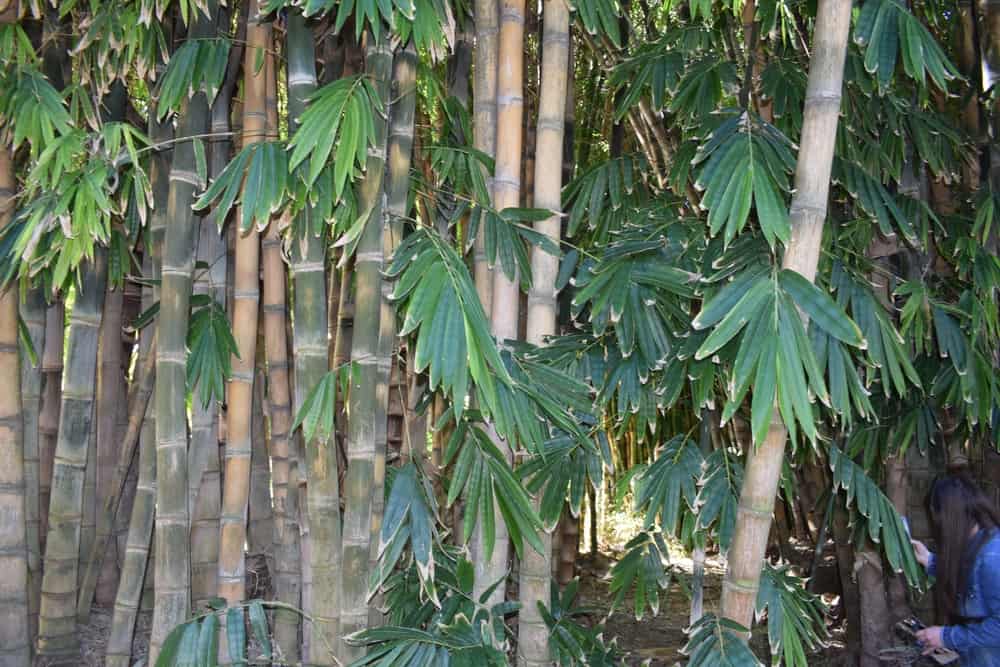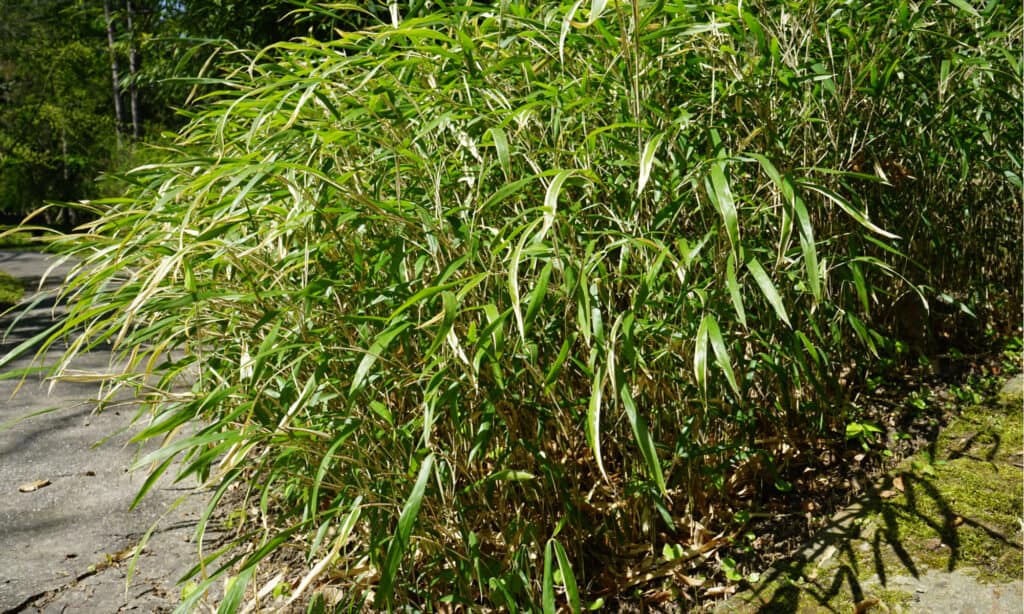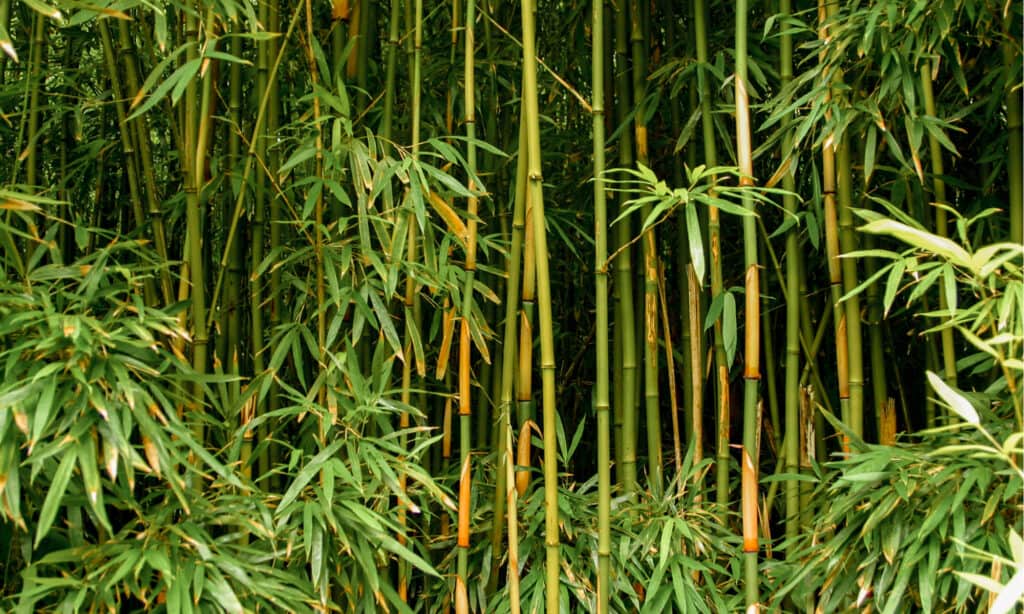You may not know that much about plants, but there are many differences between river cane vs bamboo. While both of these plants belong to the bamboo family, they have some things in common, but there are many things that make them different from one another. But what might some of those things be, and what can you expect out of planting either bamboo or river cane in your yard?
In this article, we will compare and contrast bamboo and river cane so that you can have a full understanding of both of these plants. We will describe them in detail physically as well as what they are typically used for. Finally, we will address where they grow best and what they need in terms of water and light in case you want to try growing them yourself. Let’s get started now!
Comparing River Cane vs Bamboo

| River Cane | Bamboo | |
|---|---|---|
| Classification | Arundinaria gigantea | Poaceae bambusoideae |
| Description | A bamboo species native to the Southern United States. Grows anywhere from 5-12 feet tall and has thin stalks or stems. Plenty of leaves give it a shrublike appearance rather than individual stalks, and it grows prolifically in clusters. | Thin, woody trunks that end in long and delicate leaves. Can grow up to 90-100 feet tall, depending on the species, of which there are roughly 1200! Comes in a variety of colors, including green, gray, black, and red. Stems or trunks are typically hollow, with visible rings around the outside to show their growth. |
| Uses | Ideal for privacy or shrub coverage as well as assistance with soil erosion. Can also be used as a hobby building material or crafting supply, similarly to bamboo. | Dozens of uses, including furniture, paper crafts, culinary applications, home building, accessories, home goods, decoration, and more. Also utilized medicinally in many cultures, and you can make musical instruments too! |
| Hardiness Zones | 5-9 | 5-10 |
| Water and Light Needs | Enjoys full sun and actively moist soil; typically found along marshlands or swamps. Humidity or misting is a must. | Depends on the species, but often needs at least 5 hours of bright, indirect light per day. Needs an inch or two of water per week, but don’t let the roots sit in water. |
Key Differences Between River Cane vs Bamboo

You can get bamboo in a number of different colors, while river cane only comes in a dull green.
©Furiarossa/Shutterstock.com
There are a number of key differences between river cane and bamboo. While both plants belong to the bamboo family, river cane is a very distinct species that is native to the United States. In addition, bamboo grows much taller than river cane does, and comes in more colors overall. Finally, bamboo is utilized in many manufacturing businesses around the world, while river cane is less known.
Let’s go over all of these differences in more detail now.
River Cane vs Bamboo: Classification
It is safe to say that all river cane is technically bamboo, but not all bamboo is river cane. In fact, river cane originated in the United States, primarily in the Southeast, while bamboo originated in China, research suggests. The classification of river cane is Arundinaria gigantea, while the classification of bamboo is Poaceae bambusoideae.

River cane grows in a more shrub-like fashion compared to the average bamboo species.
©Dusan UHRIN/Shutterstock.com
River Cane vs Bamboo: Description
You can tell that bamboo and river cane are related just by looking at them, but there are some distinct differences in the way that these plants grow. For example, bamboo grows much taller than river cane does, averaging 90 feet at a maximum, while river cane only reaches 12 feet maximum.
In addition to height, river cane grows in a more shrub-like fashion compared to the average bamboo species. You can easily pick out individual bamboo stalks or trunks, but river cane grows in clusters with crowded leaves. Finally, you can get bamboo in a number of different colors, while river cane only comes in a dull green.
River Cane vs Bamboo: Uses

River cane is primarily used in backyard landscaping, as hedges or decorative plants, while bamboo has many more commercial uses.
©Eric Patterson/Shutterstock.com
While river cane and bamboo are similar in a variety of ways, they have very different uses. For example, bamboo is used more widely compared to river cane, in a number of manufacturing businesses and techniques. River cane is primarily used in backyard landscaping, as hedges or decorative plants, while bamboo has many more commercial uses.
In addition, bamboo is used in a variety of culinary settings, while river cane is not. River cane has some manufacturing or practical uses like bamboo does, but it primarily acts as a key plant in preventing erosion along river beds, which bamboo is sometimes used for as well. For the most part, river cane is simply lesser-known compared to the standard bamboo that we know and love!
River Cane vs Bamboo: Hardiness Zones
River cane and bamboo have very similar hardiness zones given their shared family. However, river cane grows best in zones 5-9, while bamboo grows best in zones 5-10. In addition, there are some bamboo varieties that can tolerate colder climates, especially compared to river cane. Given that it originated in the southern United States, river cane enjoys hot climates and humidity more than some bamboo varieties.

River cane grows best in zones 5-9, while bamboo grows best in zones 5-10.
©Mauro Rodrigues/Shutterstock.com
River Cane vs Bamboo: Water and Light Needs
A final key difference between bamboo and river cane has to be their needs as plants. River cane thrives along rivers and in swamplands, needing plenty of water in order to survive, while bamboo tends to prefer a period of drying before being watered again. In addition, river cane grows prolifically when placed in full sun, while bamboo enjoys partial sun more often than not.
The photo featured at the top of this post is © Dusan UHRIN/Shutterstock.com
Thank you for reading! Have some feedback for us? Contact the AZ Animals editorial team.






